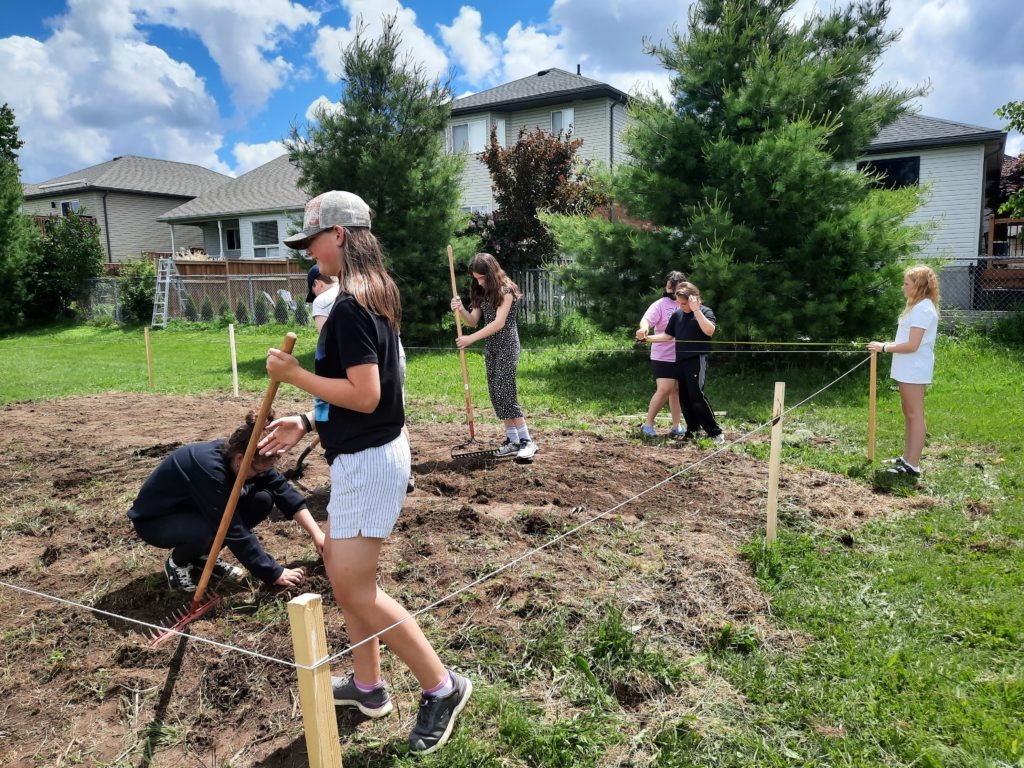Students at JD Hogarth Public School Plan and Implement SDG Projects
Nava Zarrabi-Yan, a grade 7 teacher at JD Hogarth Public School in Fergus has been working to teach her students all about the UN Sustainable Development Goals (SDGs) – and inspire them to act. Early in the school year, Nava applied for, and received a grant from the Upper Grand District School Board to support experiential learning in her class. When faced with the decision on how the money should be spent, Nava decided to let the students decide!
For Nava, it was important that the projects were student-led and action oriented. To help with this, the class took part in an online session from Learning for a Sustainable Future. This helped students think about how their projects could have a long lasting impact in their school and community while advancing the SDGs.
“Action projects are more long-lasting and are different from quick activity. So as a class, we started looking at our ideas and thinking about which ones could really be action projects that we learn from and build off of.”
Nava Zarrabi-Yan, Grade 7 Teacher at JD Hogarth Public School
Project Planning
Students in Nava’s class were introduced to the SDGs early in the year exploring different topics and issues around the world and in their own community.
“I really enjoyed learning about the SDGs. I think it is important to learn about the SDGs because then you know how to help the world and make the world a better place.“
Grade 7 Student, JD Hogarth Public School
To kick things off, students choose the SDGs that they were most passionate about to better understand how they relate to their school and community. The students created mind webs and began considering which ideas could have a meaningful and long lasting impact at school and in the wider community. This activity helped them begin narrowing in on key their action project ideas.
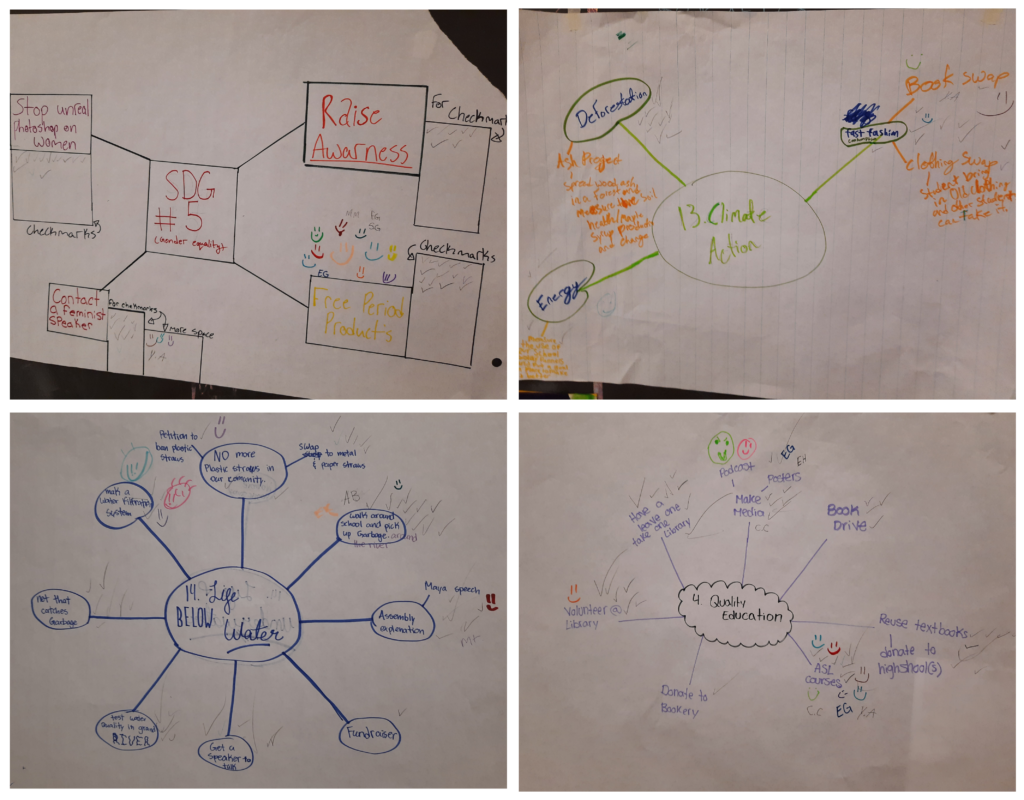
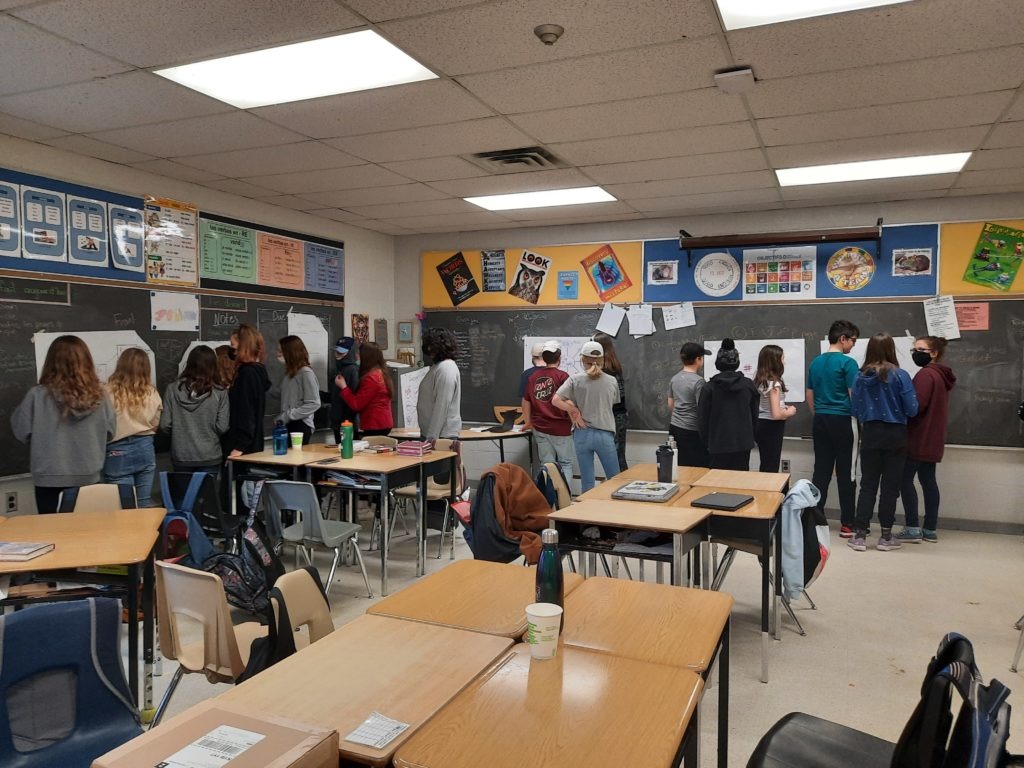
Presenting their Concepts
After working hard to develop their project proposals, students present their ideas to the class. Each student group shared the main SDG their project focused on, what they knew about the issue, how it impacted their local community, who was most affected and their proposed solution. Students also highlighted other SDGs their work touched on – recognizing the interconnected nature of the SDGs. They also made a funding ask that would help them bring their projects to life.
Six student projects were proposed. Two projects focused on creating pollinator gardens on the school grounds, advancing SDG 15: Life on Land. These students planned to incorporate flowers to attract butterflies, bees and other pollinators as well as signage to protect the garden and inform students and visitors about the importance of pollinators and protecting their habitats. Also addressing SDG 15, another student group proposed building birdhouses to improve habitat for local birds. These birdhouses would provide an opportunity for education through guided walks where community members could learn more about local bird species and the importance of protecting natural habitat in the community.
Another group was interested in exploring different types of water filtration systems including both natural and store purchased (e.g. Life Straw) methods, advancing SDG 6: Clean Water & Sanitation. These students recognized how this would help them understand and improve water quality in their school and local community and also help local Indigenous communities who have faced boil water advisories for many years.
Focused on SDG 4: Quality Education and a number of other SDGs, another group focused on raising awareness about important sustainability issues within their school through SDG focused education campaigns. For example, a “no trash at school day” would raise awareness about the amount of waste created and encourage students to reduce waste, advancing SDG 12: Responsible Production & Consumption. They also thought about opportunities to raise awareness about other issues such as energy conservation and plastic pollution in oceans.
A final student project proposed a community pantry to address local food insecurity and advance SDG 2: Zero Hunger. Students proposed setting up a pantry at the neighbouring church, or elsewhere in the community where anyone can donate or get the food they need. These students are connecting with the local food bank to get some advice on how they can implement their project.
Bringing SDG Projects to Life
The funds received from the school board allowed for all proposed projects to be implemented. The projects continue to be student-led with the students conducting research, connecting with community members and working to finalize their project budgets.
Over the next few weeks students worked to implement their project – preparing soil for pollinator plantings, building insect hotels and bird houses, planning for a community pantry and sharing what the learned with others. Reflecting on their hard work, and what they learned about the SDGs one student said:
“I enjoy learning about the SDGs, I think it’s great to learn and then teach others. The SDGs are awesome and helped me see all the different things happening on our planet, and that they all connect. If we all work together and try our best to help the environment then it could make a change. I think everyone should learn about them, when we did our SDG project it shows that we don’t only have to learn about them, but we made projects that can positively change the environment and other people can too.”
Grade 7 Student, JD Hograth Public School
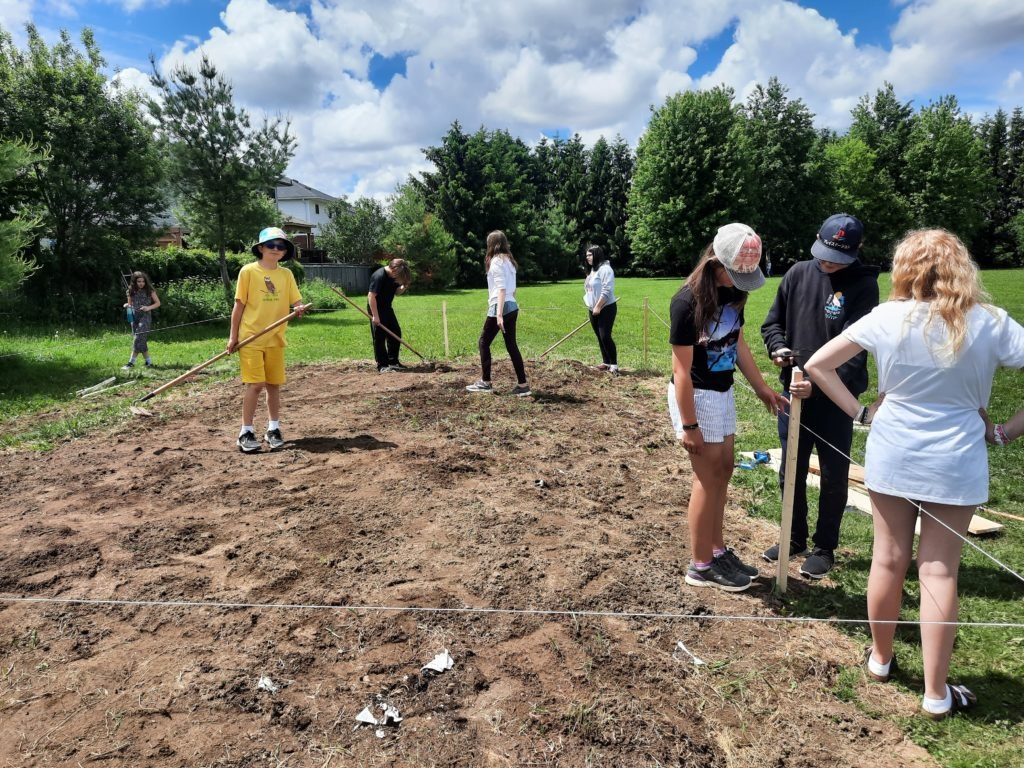
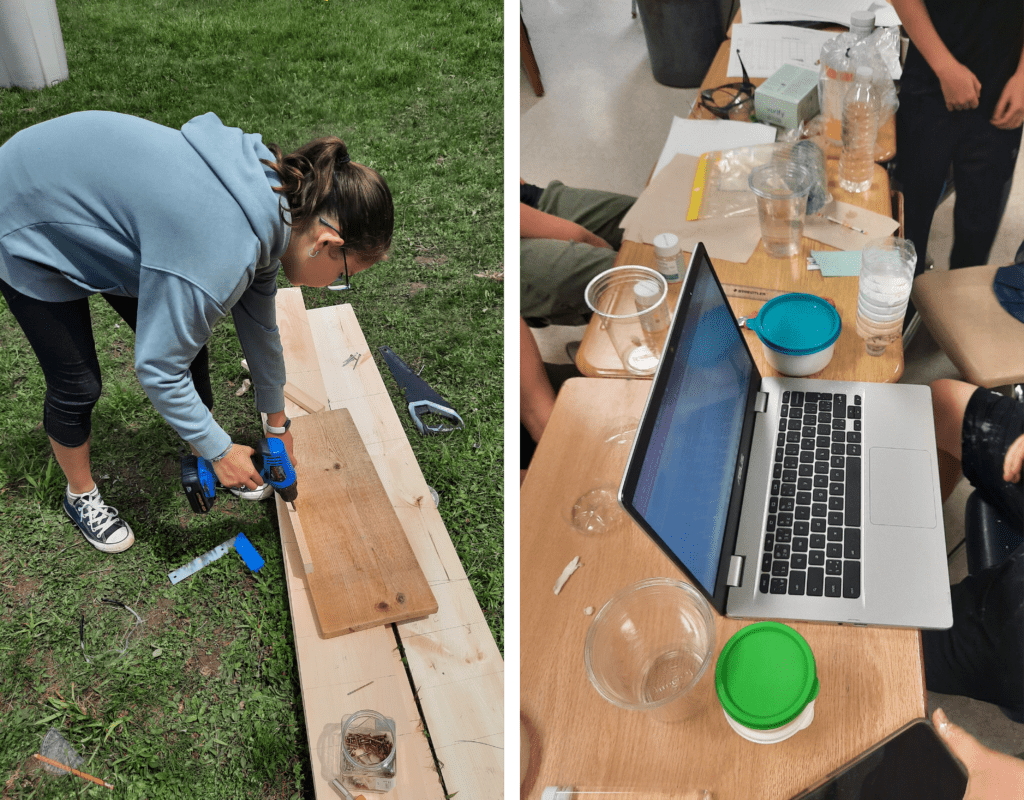
“I loved learning about SDG’s it was such a cool experience and I’m so glad we did it this year because it’s so important to learn how we can help in the SDG journey. I strongly recommend that this class does it in years to come. It gave me a sense of responsibility and achievement and I learned so much from this experience.”
Grade 7 Student JD Hogarth Public School
Learning about the SDGs and working to develop their action projects helped students to understand the big challenges at a global level – and what they can do to make a change locally.
“It’s important to learn about the SDGs because it helps to develop insights about the challenges we are facing globally.”
Grade 7 Student, JD Hogarth Public School
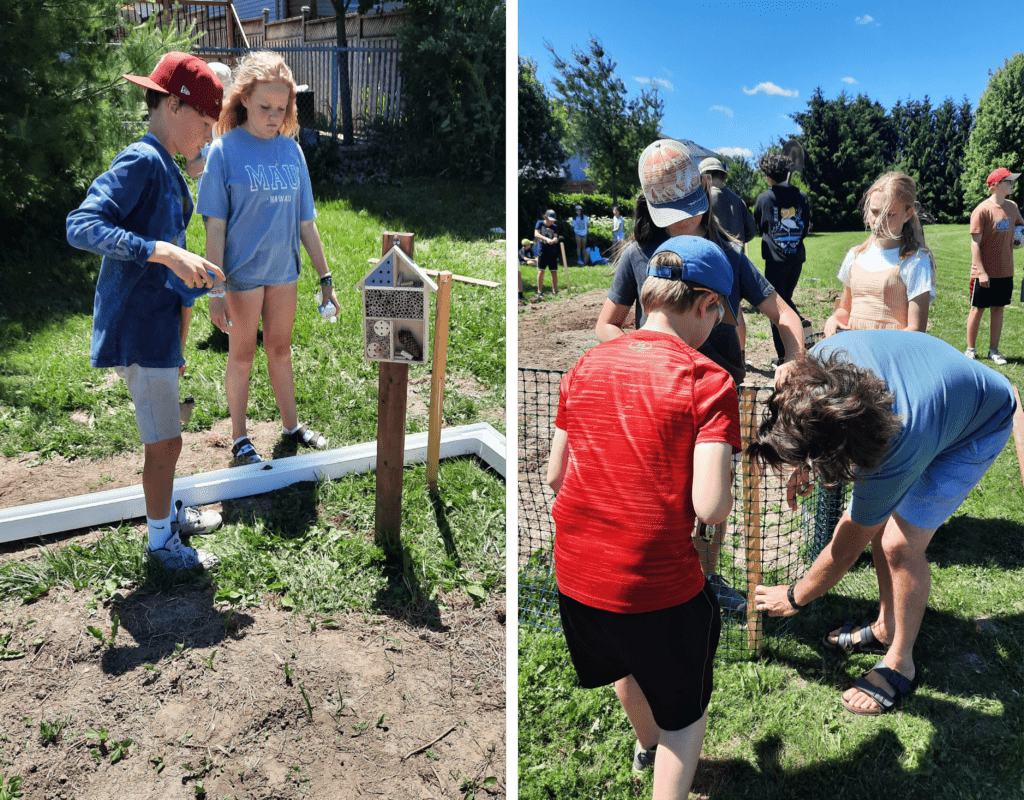
“It was SUPER fun to learn about the SDGs. I think it’s really important that we learn about them because these goals change lives! We have done mMany projects this year about them, and to be honest, it was hard, but it was 100 percent worth it to help our awesome community!”
Grade 7 Student JD Hogarth Public School
With the success of this project, Nava is already thinking about how she can build on this student work next year by continuing to support student-led projects and even running an SDG Club at JD Hogarth to encourage more student action and build off these projects. The SDGs have been a valuable teaching tool by encouraging students to think about global issues and understand how they can take action and make change in their school, and in their community.
Additional Resources
For more information and curated resources about teaching the SDGs, visit the Upper Grand District School Board (UGDSB) Pivot Project website. The Pivot Project supports any UGDSB teacher in any curriculum area, K-12+, with integrating sustainability thinking, active citizenship, and the UN sustainable development goals into their practice.Their monthly Pivot Point newsletters have resources and guiding questions to help incorporate the SDGs into the classroom.
Download the Facilitators Guide to Engaging Students in Sustainable Action Projects from Learning for a Sustainable Future for more information on student-led action projects.

